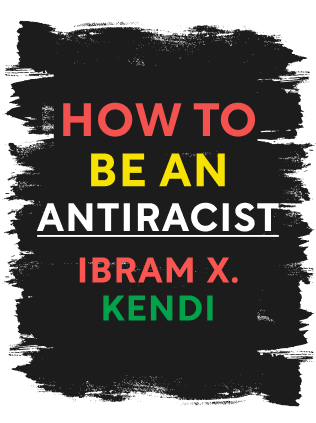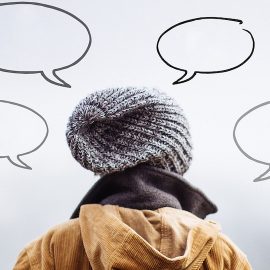

This article is an excerpt from the Shortform book guide to "How to Be an Antiracist" by tIbram X. Kendi. Shortform has the world's best summaries and analyses of books you should be reading.
Like this article? Sign up for a free trial here .
What is suasion? Can it actually help address the problem of racism?
Suasion is the process of trying to use persuasion to convince a person to not be racist. Ibram X. Kendi discusses it in How to Be an Antiracist and explains why it doesn’t fix the problem.
Keep reading to understand suasion, why people think it’s the solution, and why it doesn’t fix racist policies.
Identification of the Problem
To work towards ending racism, you have to treat the cause, not the symptoms. Many people think that racism is caused by ignorance and hate, but as we’ve learned in previous chapters, in fact, it’s actually caused by self-interest and policy. The ignorance and hate come later.
Therefore, any attempt to end racism that starts by addressing ignorance and hate instead of the root cause is never going to be successful. For example, mentoring programs might help individuals, but no behavioral program will have an effect on policy.
While racist power is very flexible—it will use whatever strategy is most effective—historically, antiracists have tried the same strategies over and over again, even though they’ve never worked and will never work because they focus in the wrong place.
According to Ibram, activism seeks power and creates policy change. Changing minds and critiquing doesn’t count as activism.
Using Suasion
The suasion definition is the process of trying to persuade people not to be racist. It was and still is a popular method for fighting racism, even though it’s doomed to fail because it doesn’t address policy.
Uplift Suasion
Uplift suasion definition: the idea that Black people can teach White people not to be racist by behaving exceptionally. For example, free Black people thought that if they set a good example, White people would free other enslaved Black people.
Uplift suasion, in addition to being an ineffective method for fighting racism, comes with some problematic ideas:
- It suggests that White criticisms of Black behavior are valid.
- It puts the responsibility on everyone except White people to change their racist ideas.
- It excuses Black people in positions of power from trying to change policy. According to uplift suasion, just having reached a position of power is exceptional.
- It’s doomed to fail because no one is perfect all the time.
- It gives weight to the idea that any Black person who behaves well is unusual because regular Black people all behave badly.
- It doesn’t allow Black people to be themselves.
Early White abolitionists gave free Black people this idea, and it resurfaced in Ibram’s generation. For example, when Ibram was on a date with Sadiqa at a restaurant that had a Buddha statue, a drunk White man fondled the statue. Sadiqa said that she was glad the man wasn’t Black. Ibram had had this kind of thought before and they talked about it. If the man had been Black, Sadiqa would have been embarrassed because he made the whole race look bad in front of White people. As a result, White people would become more racist.
But uplift suasion didn’t work pre-Civil War and it doesn’t work now either.
Moral/Educational Suasion
Moral/education suasion is the idea that White people are only racist because they don’t know any better. Like uplift suasion, the responsibility falls on Black people to change White people’s ideas. Moral suasion is supposed to appeal to White people’s consciences and educational suasion is supposed to appeal to their intellect.
Moral/educational suasion, in addition to being an ineffective method for fighting racism, comes with some problems:
- Racist policymakers, not the average White person, are the problem. There’s a good chance they’re already aware of the racism their policies cause—the policies might even be designed to create racism, if that racism furthers self-interest.
- Not everyone has a conscience or morals.
- Racist ideas are illogical, so appealing to conscience or intellect is ineffective.
There are instances in history in which moral/educational suasion appeared to be effective. However, in most cases, changes in policy weren’t created by suasion—they were a result of self-interest.
For example, some people consider that educational suasion was effective because it resulted in the Civil Rights Act, Voting Rights Act, and desegregation rulings. However, these changes weren’t caused by educational suasion. They were created by self-interest—US foreign relations were suffering because visiting African diplomats experienced racist abuse. The civil rights legislation mentioned above was created to soothe foreign relations, and once enough nations were soothed, progress stopped.
Incorrect Order of Operations
Uplift, moral, and education suasion all suggest that racist policy can only be changed after racist ideas have changed. However, this order of operations is ineffective because antiracist policies benefit everyone, and it’s easier to get people to change their ideas once they’ve seen the benefits of policy change. (And they’ve seen that none of the negative consequences racist policymakers warn about have come to pass.)
There are several examples of policy changing first and ideas changing in response, once people see that the policy change was beneficial for everyone:
- Policies around desegregated schools changed in the 1950s and 1960s, and only later did White people support the change.
- Policy around interracial marriage changed in 1967, but most White people didn’t support it until later.
- Obamacare was implemented in 2010 and is far more supported now.

———End of Preview———
Like what you just read? Read the rest of the world's best book summary and analysis of Ibram X. Kendi's "How to Be an Antiracist" at Shortform .
Here's what you'll find in our full How to Be an Antiracist summary :
- What racism is and how it evolved
- How you might have subtle racist thoughts and not even be aware of them
- Why being "not racist" isn't good enough






